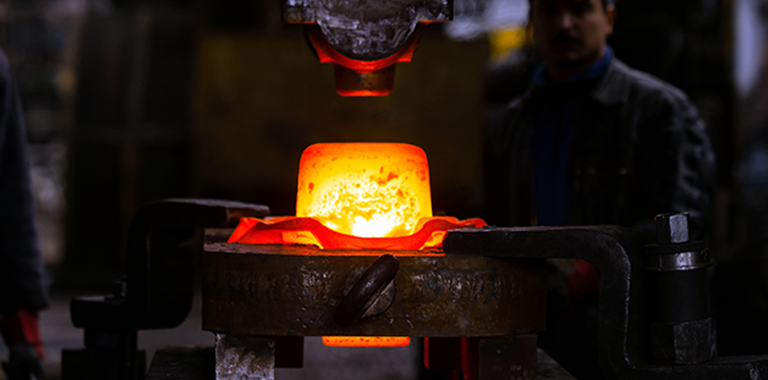
Hot forging, an ancient art dating back millennia, has continually evolved to become a cornerstone of modern industrial manufacturing. In this comprehensive exploration, we delve deep into the rich history, progressive development, materials employed, diverse applications, ongoing trends, and the intricate balance of advantages and disadvantages that define the world of hot forging.

A Glimpse into History
The fascinating journey of hot forging embarks from the dawn of human civilization. Ancient blacksmiths, wielding fire and hammers, laid the foundational principles of this craft by shaping metals into tools and weaponry. This rudimentary yet ingenious process, passed down through generations, eventually evolved into the sophisticated industrial technique we know today. Each era introduced innovations in materials and methodologies, propelling hot forging into the future.
The Evolution of Hot Forging
A seismic shift occurred during the Industrial Revolution, which ushered in the era of mechanization. Steam-powered hammers and hydraulic presses emerged as revolutionary tools in the 19th century, facilitating the large-scale production of intricate and precise components. Since that pivotal moment, hot forging has remained in perpetual transformation, adapting to advancements in materials, technology, and automation.
Materials of Hot Forging
Hot forging casts a wide net, accommodating a plethora of materials. While steel stands as the perennial favorite, the process extends its embrace to metals like aluminum, copper, and a plethora of alloys. The choice of material hinges on the specific qualities and applications sought in the final product, ranging from strength and corrosion resistance to electrical conductivity.
Applications Across Industries
Hot forging's versatility finds expression across an eclectic array of industries. In the automotive sector, it lays the foundation for the creation of critical engine components, robust gears, and resilient suspension parts. In the aerospace realm, hot forging achieves the impossible, birthing aircraft landing gear, structural components, and turbine blades, lauded for their high-strength and lightweight attributes. Construction benefits from hot-forged fasteners and structural elements that fortify infrastructure against the harshest of environments.
Trends in Hot Forging
As we stand on the precipice of the future, several discernible trends steer the course of hot forging. One standout trend is the increasing reliance on advanced simulation and modeling software, ushering in an era of precision and optimization that minimizes waste and enhances efficiency. The infusion of automation and robotics into the forging process streamlines production, elevates safety standards, and opens new frontiers in productivity. Sustainability, an overarching concern in contemporary industry, fuels initiatives to reduce energy consumption and minimize the environmental footprint of hot forging operations.
Advantages of Hot Forging
Hot forging boasts a multitude of advantages, some of which include:
Improved Material Properties: The application of elevated temperatures during hot forging reduces material resistance and augments ductility, ushering in superior mechanical properties and refined grain structures.
Complex Geometries: Hot forging's inherent flexibility allows for the fabrication of intricate and multifaceted shapes, often considered insurmountable by alternative techniques.
Cost Efficiency: Through mass production and the reduction of material waste, hot forging emerges as an economically viable manufacturing process, bearing testament to its cost efficiency.
Disadvantages of Hot Forging
Amidst its resplendent benefits, hot forging does contend with certain limitations:
Energy Intensive: The process consumes a substantial amount of energy, especially during the initial heating stages, contributing to high operational costs and environmental concerns.
Tooling Wear: Frequent use of dies and molds in hot forging can lead to wear and tear, necessitating regular maintenance and eventual replacement, which can add to production costs.
Hot forging, characterized by its illustrious history and adaptive evolution, stands as a paragon of modern manufacturing. Its versatility, capacity to birth high-quality components, and readiness to embrace emerging trends keep it firmly entrenched in a myriad of industries. In the ceaseless march of technology and the burgeoning importance of environmental responsibility, hot forging remains resilient, constantly evolving to meet future challenges. In this ever-changing landscape, hot forging continues to shape the world, forging a path toward a stronger, more sustainable future.